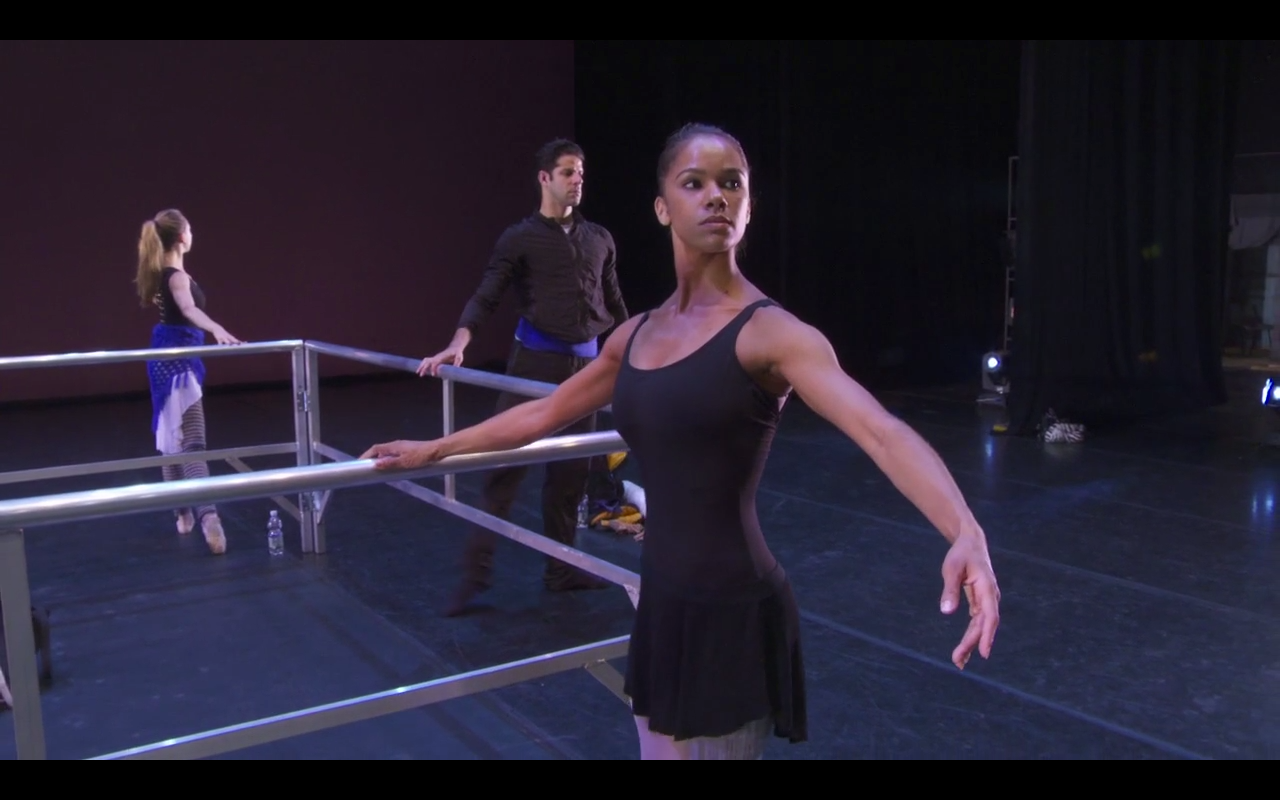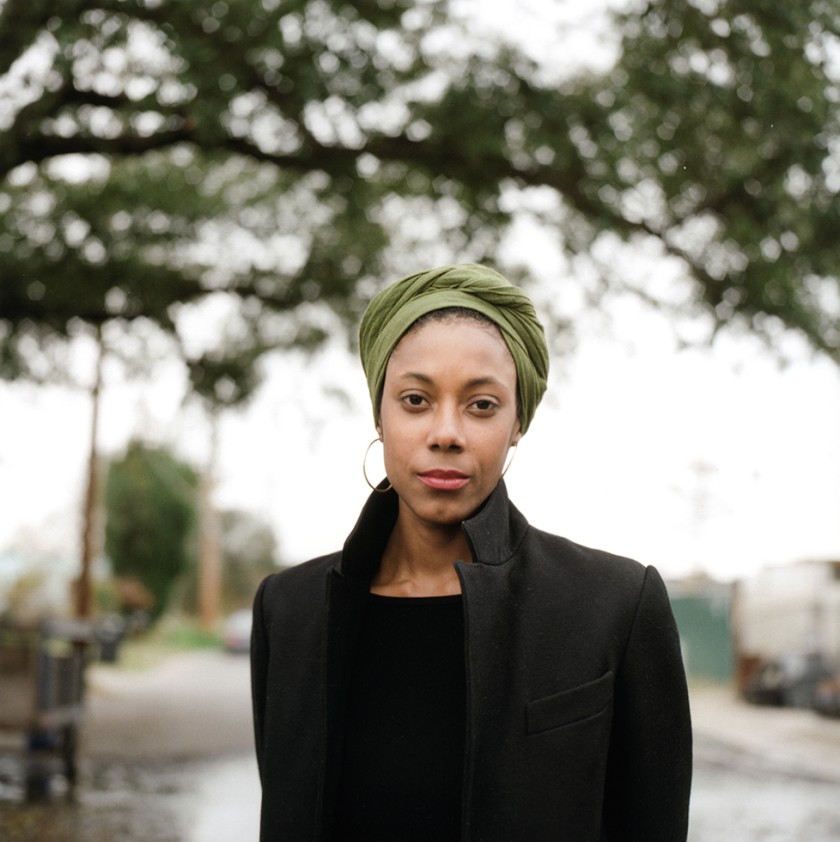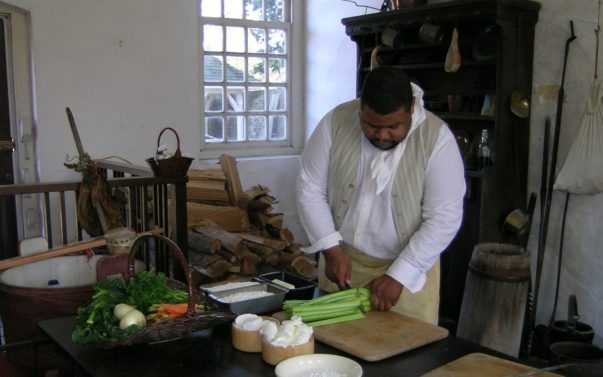 “A Ballerina’s Tale” is a delightfully intimate portrait of Misty Copeland—full of close-ups, uncomfortable silence, and peeks behind the curtain of one of the nation’s most prominent dancers. Documentary-maker Nelson George spent three years filming.
“A Ballerina’s Tale” is a delightfully intimate portrait of Misty Copeland—full of close-ups, uncomfortable silence, and peeks behind the curtain of one of the nation’s most prominent dancers. Documentary-maker Nelson George spent three years filming.
Balletomanes already know much of the biography: As one of six children raised by a single mother in San Pedro, California, Misty found refuge from a sometimes unstable home at the local Boys & Girls Club, where she first took a ballet class at 13. In the 20 years since, she has become the face of modern dance, appearing everywhere from The Late Show With Stephen Colbert to Prince’s Welcome to America tour. But that fame didn’t happen overnight.
When she was 17, Misty moved from California to New York to join the American Ballet Theatre’s (ABT) Studio Company. She arrived to find herself the only African-American dancer among a corps of 80. Copeland, a beautiful woman who smiles with her whole face and shoulders, admits she felt inadequate, struggling with racial and body image issues. She numbed herself with sugary vices like Krispy Kreme donuts: “I didn’t want to go to class; I didn’t want to have to look at myself in the mirror.”
In 2012, the director selected Copeland to dance the Firebird, in Alexei Ratmansky’s Firebird, a game-changing role, and her first turn in a principal role as a professional soloist. Her ABT mentor Susan Fales-Hill invited powerful black women to see the performance—BET President Debra Lee attended—and congratulate Copeland on her success. The dancer was in excruciating pain, dancing through multiple stress fractures in her leg. But for Copeland, there was no other choice but to take the stage: “I understood that I had to make it work. I knew that the night stood for something so much bigger than me and beyond what I could even imagine.”
Her stellar Firebird led to a dinner with George, an award-winning journalist and filmmaker. Copeland’s work was his first ballet experience; he was hooked. He wanted to document the way the ballerina was remaking the art, and the audience. Copeland agreed: “What I’m trying to do is get people in the door because I think once they get in the door of the theater, they’ll see the beauty and just how incredible the art form is.”
George and Copeland started shortly thereafter, filming orthopedic surgeons debating whether to put a steel rod in her leg, and later, her return to the stage.
She triumphed, dancing Odette/Odile in Swan Lake, the first African-American woman to do so. A little over a month later, she smashed another barrier, becoming the first black women promoted to principal ballerina at ABT—a goal a decade in achieving.
Viewers mark the mental and physical fortitude it takes Copeland to reach the top—Copeland is on her feet (excuse me, on her toes) for hours a day, running between class, rehearsal, physical therapy and work as a spokesperson for Under Armour, Dr. Pepper and Coach.
An informal city sidewalk gathering of Copeland friends and fellow dancers to toast to her massive new Under Armour billboard is perhaps the most touching moment. The “I Will What I Want” campaign signaled a shift to ballerinas glorying in athleticism and strength, right alongside NFL quarterback Tom Brady and NBA point guard Stephen Curry. A moment I was waiting to see—Copeland speaking about achieving her dream of principal ABT dancer—went missing. George just tucks in a simple note toward the end.
While the film is solid on Misty’s professional endeavors, the documentary fails to flesh out Misty the person. Outside of a cameo from Leyla Feyyaz, her best friend and a former dancer, viewers don’t see who makes up Copeland’s inner circle. The same gap occurs with her family, although Copeland has explained that the narrow focus on ballet was intentional: “I didn’t want this to be a ‘Misty movie’—I wanted to show people what ballet was,” she told Jezebel.
None of this would have been possible without the trailblazing black ballerinas who came before Copeland. Viewers should stay through the credits for the ‘black ballerina curtain call,’ which includes Raven Wilkinson, Janet Collins and Carmen de Lavallade. “It’s my favorite part of the whole documentary, the end,” Copeland says in Elle magazine. “I always get teary eyed.”
“A Ballerina’s Tale” is now available in select theaters and on iTunes.


